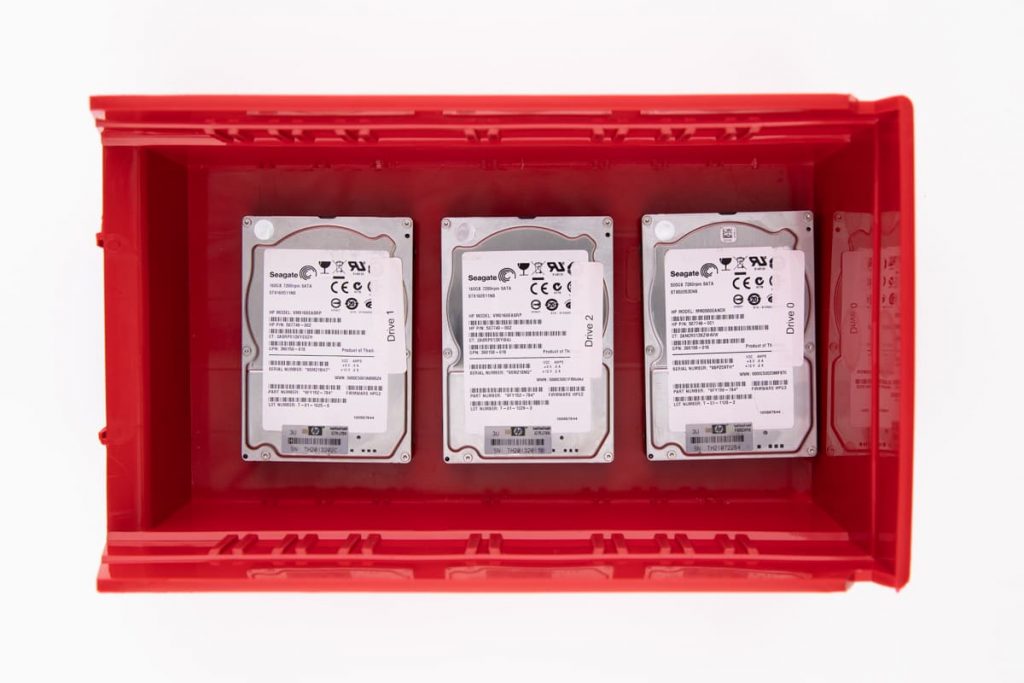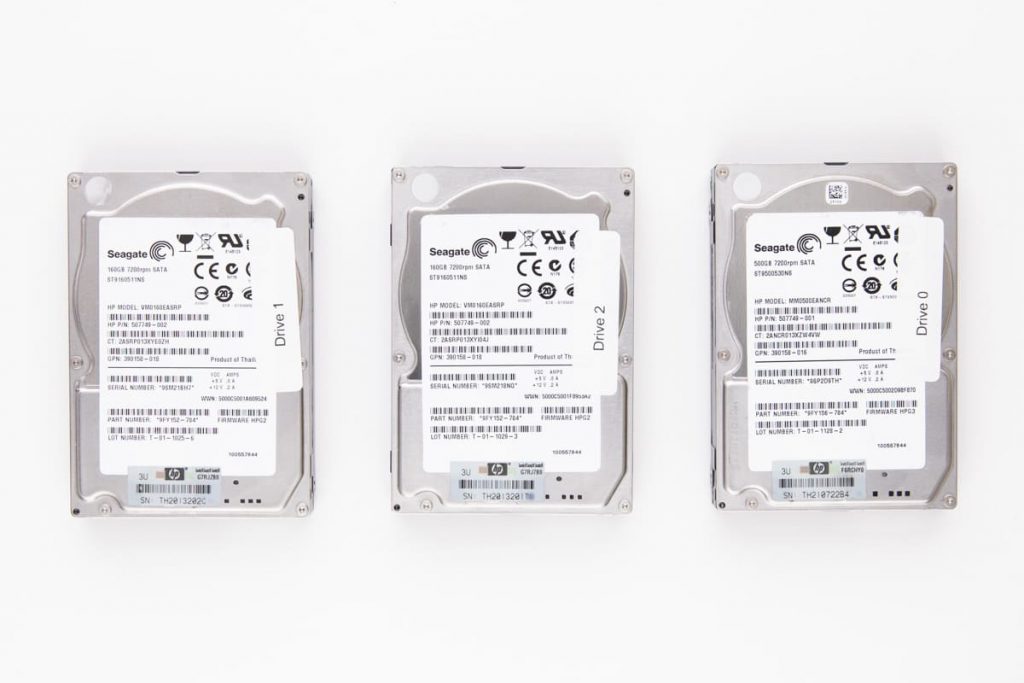Servers are crucial for organizations, storing essential data and running critical programs. They connect PCs to a network, acting as data storage and backup. Server failure can destabilize a business, requiring immediate assistance from a data recovery company to prevent permanent data loss. It’s important not to run array restore operations before recovery to avoid hindering the process.
Successful data recovery depends on understanding server roles, hardware, and software, plus specialist experience. RAID Recovery Services provides secure data retrieval with expert technicians and advanced methods, addressing both physical and logical failures.
HP ProLiant RAID 5 Failure
Recently, our company received an HP ProLiant ML380 G6 Server for emergency recovery. The server’s hard drives were combined in a RAID 5 array. The client was a business owner who recently transferred one of the branches to work remotely. He used the server to implement the file-and-print system and shared internet access.
The server was accidentally dropped, and all the crucial data became inaccessible. The customer tried to reinitialize the RAID 5, but the server would not run again. So he decided to entrust his device to our professionals.
Server Grade Hard Disk Drives Lose Data for These Reasons:
| Reason | Description |
|---|---|
| Physical Damage | Mishandling, drops, water, fire. |
| Mechanical Failure | Failure of moving parts: spindle motor, actuator arm, read/write heads. |
| Electronic Failure | Malfunction of electronic components: controller board, power supply. |
| Firmware Corruption | Corrupted or failed firmware. |
| Wear and Tear | Degradation over time due to usage. |
| Power Surges/Outages | Electrical spikes/drops causing damage or data corruption. |
| Human Error | Accidental data deletion, formatting, or modification. |
| Environmental Factors | Extreme temperatures, humidity, dust, magnetic fields affect performance and longevity. |
Our engineer first reviewed the components’ physical state since the client’s server failed due to mechanical damage. Our technicians received three hard disks on which the array’s data was written. They opened failed drives in our ISO Certified Class 10 Cleanroom for inspection.
Two out of three hard disks were damaged. The first media storage had a damaged spindle motor. The second drive failed due to a magnetic head crash. For complete data recovery, we needed two fully functional hard drives.
Thus, the engineer decided to recover data from HDD with failed motor and then use two hard drives to restore the array using XOR checksums. The client was informed about the evaluation results. Upon receiving his approval, we proceeded with data recovery.
HP ProLiant Hard Drive Recovery
The spindle motor is the most vital component of a hard drive, responsible for rotating the drive platters on the axis. Accountable for uniform and stable rotation, the spindle ensures trouble-free operation of the hard drive for a long time. As in the customer’s case, mechanical damage was applied to the disk as it was dropped from a height during operation.
Fortunately, the plates did not touch the dividers when the motor shaft was bent. Instead, the motor stuck and did not spin. As a result, the hard disk drive stopped working.
The most compelling data retrieval solution was rearranging the plate pack to another HDA with a serviceable bearing and motor. However, it was necessary to very accurately maintain the relative position of the plates.

Our engineer successfully removed the plates thanks to years of experience and state-of-art data recovery tools. Then, he placed them on the hard drive with a functional spindle motor while keeping the disks centered.
One failed media storage device was brought to a working state for a short time. Our engineer used two HDDs to restore the RAID 5 array.
HP Server RAID 5 Restoration
Our technician searched for boot sectors, partition tables, and various file system structures to recover data from RAID. Their location made it possible to accurately determine the offsets from the beginning of the LBA range.

After mapping the disk interleaving order, offsets in the middle of the LBA range were detected. It was done according to the characteristic data offset in the second half of the array with respect to the file system.
Next, our engineer built a matrix of disk usage order in the array. In the case of RAID 5, the data matrix’s dimension was equal to the number of disks in the array minus one horizontally and the number of disks in the array vertically.
Our technician successfully restored the array, and the server was running again. After that, he copied all data to a new set of hard disk drives. The client reviewed the results via a remote file verification session. Upon receiving his approval, we shipped his data back.
Call our customer service team at 866.990.8999 to request our professional data recovery solutions. Another way to contact us is to fill out the form to start your case immediately.
Frequently Asked Questions
What is iLO in HP ProLiant?
iLO stands for Integrated Lights-Out. It is HP’s proprietary embedded server management technology that allows remote control of HP servers. iLO facilitates monitoring, updating, and troubleshooting servers remotely, making server management more efficient.
How do I access HP ProLiant iLO?
Access to HP ProLiant’s iLO can be achieved by connecting to the iLO’s dedicated IP address through a web browser. This IP address must be configured previously through the server’s BIOS setup or by using the iLO configuration utility during boot-up.
How to run diagnostics on an HP ProLiant server?
To run diagnostics, you can use the HP Insight Diagnostics utility. This can be accessed either online (within the operating system) or offline during the boot process. The tool provides comprehensive tests for system components, ensuring they function correctly.
How do I check my HP server's health status?
The health status of your HP server can be checked through the iLO (Integrated Lights-Out) web interface, which provides detailed system health and status information. Additionally, server health can also be monitored from the HP System Management Homepage if it’s installed on your server.
How can I check the RAID status on an HP ProLiant server?
To check the RAID status, you can use the HP Smart Storage Administrator (SSA) if you’re logged into the server OS. If you’re not logged in or prefer a pre-OS method, access the RAID configuration during the server’s boot process by pressing the relevant key (usually F8) when prompted.